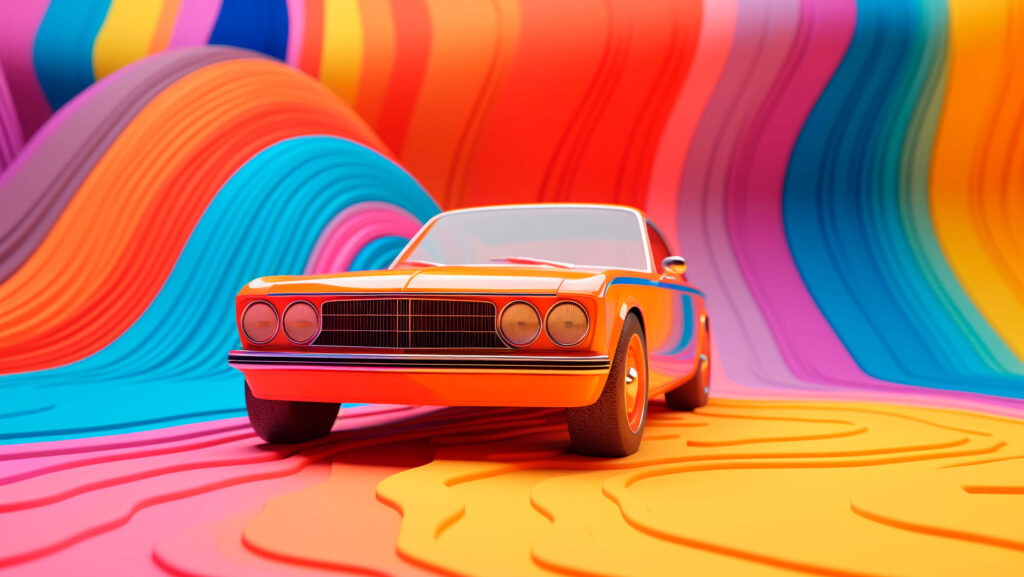Automotive design has long been recognized as a blend of function and aesthetics, where the engineering meets artistic expression. The automotive industry is not just about building cars that can move from point A to point B; it’s about creating machines that evoke emotions, capture attention, and stand as testaments to the evolving world of technology and artistry.
The Artistic Evolution of Car Design
From the early days of the automobile, designers and engineers have pushed the boundaries of what a car can be. The iconic curves of a 1950s Cadillac, the sharp edges of a 1960s Ferrari, and the sleek lines of a modern-day Tesla are all products of creative minds striving to meld beauty with practicality. Automotive art is as much about innovation in form as it is about function.
In fact, the artistic element of car design is often the first thing that attracts a potential buyer. Whether it’s the gleaming bodywork or the intricate detailing on the dashboard, every design decision is a choice between what is functional and what is visually pleasing. This fusion of design and engineering is what makes car design one of the most unique fields of art and industry.
Car Culture and Artistic Expression
Beyond the design of the vehicle itself, car culture has also influenced the world of art in profound ways. From custom car painting to the rise of automotive photography and digital art, the automobile has become a canvas for self-expression. Artists, both on and off the road, use cars as mediums to make bold statements about identity, style, and freedom.
Custom Car Painting: For many car enthusiasts, custom paint jobs are a form of artistic expression. Whether it’s a simple, clean design or an elaborate mural, the car becomes a piece of art that tells the owner’s story. These painted designs often feature vibrant colors, intricate patterns, and even airbrushed depictions of scenes or themes that have deep personal meaning to the owner.
Automotive Photography and Digital Art: As the automotive world has evolved, so too has its representation in art. Photographers specializing in automotive shoots capture the beauty and power of cars in dramatic settings, while digital artists manipulate images of cars to create futuristic concepts, vintage reinterpretations, or even dreamlike depictions that exist solely in the realm of the imagination.
Iconic Car Brands as Art
Many iconic car brands have become synonymous with excellence in design and craftsmanship. For example, Ferrari is often hailed not just as a car manufacturer, but as an artistic entity. The brand’s commitment to performance, coupled with its dedication to beautiful design, has earned it a place in the pantheon of automotive art. Each Ferrari model is a meticulously crafted masterpiece, carefully designed to convey both elegance and power.
Another example is Porsche, which is known for its minimalist approach to design. The classic 911, with its smooth, uncluttered lines, has achieved the status of a timeless design icon. The brand’s philosophy revolves around creating vehicles that are as much about the experience of driving as they are about the visual appeal of the car itself.
Automotive Art in Popular Culture
The influence of automotive art reaches far beyond the designer studios of car manufacturers. In films, TV shows, and even music videos, cars are often used as symbols of freedom, rebellion, and innovation. Think of the classic car chases in action movies or the rebellious muscle cars of the 1960s. In each of these representations, the car is not just a mode of transportation but a symbol of something bigger – an embodiment of artistry, culture, and personal expression.
Moreover, brands like Lamborghini and Bugatti have created vehicles that are as much about the statement they make as about their engineering. Their designs are a fusion of aerodynamics and pure aesthetic appeal, combining cutting-edge technology with sculptural beauty.
The Future of Automotive Art
As technology continues to advance, the future of automotive art will undoubtedly evolve. With the rise of electric vehicles (EVs) and autonomous cars, designers are being challenged to rethink what a car can be. The future of automotive art may move beyond the traditional aesthetic, focusing more on sustainable design, eco-friendly materials, and technology that enhances the driving experience.
Additionally, digital rendering and virtual reality could allow artists and designers to experiment with new forms of automotive art, creating interactive, immersive experiences for car lovers and enthusiasts.
Conclusion
Automotive design is far more than just engineering—it’s an art form. The way cars are designed, how they look, and how they interact with the environment are all expressions of creativity. As the automotive industry continues to evolve, the intersection of art and technology will only become more profound. Whether it’s the curve of a fender, the shine of a paint job, or the performance of a luxury sports car, the automobile remains one of the most enduring canvases for human creativity.



